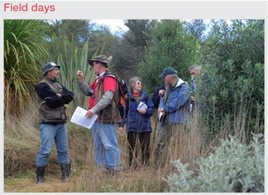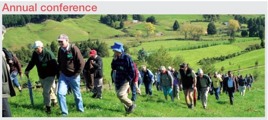Finding the right portable sawmill
Marlena Martin and Layla Robinson, New Zealand Tree Grower August 2013.
Most portable sawmills sold in this country are purchased by farmers. They can see the benefits of cutting their own trees for farm fences, sheds, yards and other projects. As a side income, woodlot owners can also offer custom milling services, either using their own logs or those of their customers. A cooperative with neighbouring farmers is also a popular option to spread both the initial cost and workload. Most farmers only saw periodically, so sharing a sawmill is very practical.
Portable sawmills are also ideal for using trees which have fallen due to age or bad weather. In recent years, many sawmills were sold to landowners in the Wanganui area after massive damage was caused by flooding and storms. All parts of a tree are of use to farmers. Logs from the top of the tree which are too small for milling can be split for posts, and off- cuts can be used for firewood.
For timber from macrocarpa not requiring treatment, boards can go straight from the milling site to the building site. They can be used as fencing materials and weather boards, and even around the home for compost bins, retaining walls and furniture.
Types of portable sawmills
Band saws
A portable band saw mill is made up of a flexible steel band blade which tracks around two pullies. It has a small frame with a track that guides the saw head through the log. The band only cuts in a horizontal plane, slicing through the entire width of the log as it is pushed through. The log needs to be turned to remove the bark on each side or to square it up.
If wide boards are cut with the bark still on each side, these boards will then need to be re-loaded on to the mill later to trim both edges. For commercial milling, many owners also have an edger along with their mill to trim these boards. For these reasons, a band saw requires a lot of handling of the log and boards.
The advantage of a band saw is the thin band blade, which allows for greater timber recovery as there is less sawdust and waste from each log. However, to make the most of this thinner cut, the operator does need to be skilled to ensure optimum sawing conditions at all times – sharp teeth, correct tooth setting, correct tension and correct feed speed. If any of these are not right, the flexible band will result in uneven wavy boards. To recover these boards, a substantial amount of planing will be required to reduce them down to usable size, losing any initial kerf savings.
The bands on a bandsaw require frequent sharpening and replacement after three or four sharpenings. In a production operation, blade maintenance costs on a band saw mill can reach $100 a day. This needs to be compared to the value of the timber you are sawing and the savings in kerf. Another important consideration is to look at the diameter of the log that can fit in the throat between the two pullies, as this will dictate whether it can be milled by a bandsaw or not.
There is a wide variety of bandsaws tailored to suit everyone from the home handyman to industrial production sites. Little mills are manual, set on ground tracks. Production mills are automatic feed, set on portable trailers with hydraulic log loading arms.
Quartersaws
Quartersaws, or double-bladed mills, are multi-saw mills. They have one horizontal blade and one or two vertical blades, and these units often require larger motors to run more than one blade at a time. The time-saving advantage of making both cuts in one pass is negated by the fact that the headrig then has to return to the original end to begin the next cut.
The vertical blade is often the larger one, with a smaller blade in horizontal position. This means the larger beams will always be sawn in the vertical position, reducing the ability to cut true quarter-sawn timber when you need to saw a wide beam in the horizontal position.
As with most portable circular mills, blade maintenance costs are much lower than a bandsaw. The rigid circular saws have larger tungsten carbide teeth and can be sharpened on the saw without being removed. The tips last a lot longer than those on a small band and have a much longer life – the blades themselves can last for years. However, you still do need to consider the wider kerf on a typical quarter saw, which can be over five millimetres.
Swing-blade saws
The single circular blade of a swing-blade saw dismantles a log by cutting horizontally in one direction and vertically in the other. The blade is pivoted at the end of the log, with the final cut intersecting with the first cut at a precise point.
By running only a single blade a smaller motor can be used, which can still cut faster than a typical quarter saw. In addition you have complete freedom to choose what size board you want to cut out of each area of the log – you can remove large beams in either plane.
The swing-blade mill produces perfectly dimensioned boards by removing them one at a time with the log remaining perfectly still. There is no re-sawing required. The other advantages of swing-blades over bandsaws are less maintenance, straighter boards, less log handling and higher production.
A limitation of swing-blade saws is that they have a wider kerf, which means more wastage per cut to sawdust. But they will usually produce more consistent and true boards, requiring less planing or thicknessing at the other end, negating any loss in sawdust.
With a swing-blade mill, the two blades supplied will last several years. The six tips can be sharpened while the blade is still on the mill, and after roughly 70 cubic metres of milling, new tips are welded on by hand or a local saw doctor for around $60. For a full day’s production, swing- blade maintenance costs are around a tenth of a bandsaw, at approximately $10 a day.
Portable swing-blade sawmills are changing the face of what was predominantly a bandsaw monopolised industry. The lightweight mills can be taken to any location on the farm, set up in 15 minutes, and able to tackle the large and logs. They are easy to use, one-person operation, and low maintenance make them well suited to farm foresters who want to make the most out of the trees on their property.
Focus on swing-blade saws
Peterson Sawmills
In the late 1980s, New Zealander Carl Peterson returned to New Zealand after living in the jungles of Fiji with his young family. It was while in Fiji that he saw an opportunity for the concept of a small swingblade sawmill, one that could be taken anywhere from dense forest to flat farm land. Carl started building them in his garage and farmers snapped them up, seeing the capabilities and versatility straight away. Many of these machines are still cutting timber today.
The Junior Peterson was designed with the part-time sawmiller in mind, with minimal investment. It is ideal for those wanting to cut their own trees or mill wood for home projects such as fences, sheds and even houses. While it may sound like a baby mill, its 13.5 hp engine provides enough power to get through a full 15 centimetre cut. Like the other models, it can easily double-cut to create a wide board of
up to 30 centimetres. It is a sturdy, accurate, productive and versatile mill.
All-Terrain Sawmill
The All-Terrain Sawmill was designed to tackle the tough milling conditions of any remote terrain. It does not need flat ground as the tracks are raised. The mill unit uses a fair amount of aluminium, so it is lightweight and easy to use and maintain.
Some operators are using it on slopes of 30 degrees or more with vertical sizing winches at the operator’s end. One person can set up and operate the mill by themselves. It can be set up and milling in less than half an hour, cutting logs up to six metres long and up to 150 centimetres in diameter. The mill also allows users to perform a double-cut where both sides of the blade are used in two consecutive cuts.
Automated swingblade mill
The automated swingblade mill has automated feed and sizing. As the operator is no longer pushing, there is much less fatigue at the end of the day. Therefore this mill is able to maintain a fast and consistent milling rate throughout the day.
The board return is good for solo operators who want more production without hiring staff as the board can be brought right back to the operator’s position. The mill is ideal for commercial ventures and fixed site milling. The automated horizontal and vertical sizing make fast work of a log producing accurate timber

 Farm Forestry New Zealand
Farm Forestry New Zealand

